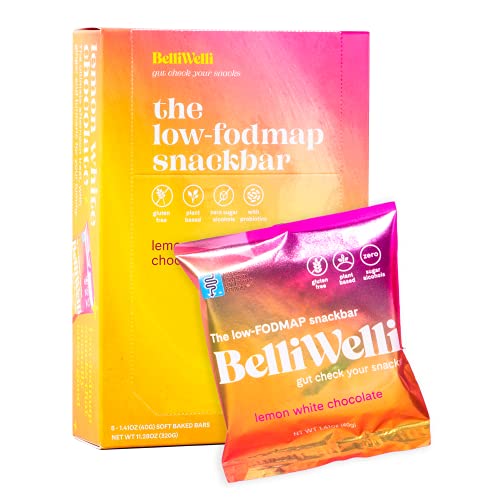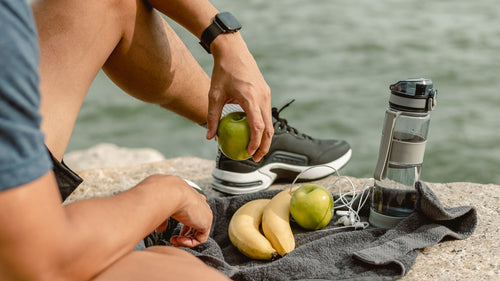
Two-Way Communication: The Gut Microbiome and Athletic Performance
Published on Monday, April 03, 2023 by Alexander KochOur Old Friend: The Gut Microbiome
Here at Foodguides, we are big fans of the gut microbiome, and our expert contributors have written a lot about the topic - see An Introduction to The Gut Microbiome, Mining for Microbes, and SHIMEⓇ- Technology to Study the Gut Microbiome for some good examples. In short, the gut microbiome is a mass of about 3 pounds of bacteria that exists in our intestines. The health and diversity of this bacterial colony have major implications for many health factors, including IBS and GERD but also anxiety and depression.
The Gut Microbiome and Exercise
Regular exercisers enjoy many health benefits: reduced blood pressure, weight control, improved blood lipid profile, increased insulin sensitivity, and (drumroll please): a healthier gut microbiome.
As I have previously written in The Link Between Exercise Immunity and Gut Health, regular exercisers tend to have a greater diversity of gut microflora, specifically a more diverse gut microbiome. How, specifically, regular exercise causes these positive changes in the gut microbiome is thought to be due to a combination of factors, including increased gut transit time (which will alter the local environment – affecting bacterial growth) and a variety of chemical messengers- myokines, neurotransmitters, and hormones that are released during exercise, all of which can alter the local environment surrounding the gut flora, influencing which strains of bacteria thrive.
Communication is a 2-Way Street!
So, the “old news” is that a healthy gut microbiome is good for you. Also, regular exercise training is associated with a healthier gut microbiome. Here is a new twist – your gut microbiome affects your muscles and how well they respond to exercise training!
For example, one recent study found the composition of the gut microbiome could predict how well one would respond to either endurance exercise or strength exercise over an 8-week training period. Specifically, better gains in cardiorespiratory fitness were associated with a gut microbiome containing higher concentrations of genera Prevotella, Romboutsia, and Dialister. In contrast, greater improvements in strength were associated with higher amounts of different bacterial species, namely Firmicutes genera Ruminococcus and unidentified Lachnospiraceae.
How could this work? Well, just as our muscles, glands, and nerves release chemicals that communicate with the bacteria in our gut, our gut microbiota “talk” back. As living organisms, the gut microbes have their own metabolism and their metabolic rate affects the levels of chemicals like lactate, amino acids, and short-chain fatty acids that can provide feedback to the human host, altering the rate at which we gain muscle mass or enhance our ability to consume oxygen.
What are the Implications?
In practical terms, what can we, as individuals do, to promote the healthiest gut microbiome possible?
In terms of diet, the consumption of probiotics and prebiotics has been associated with increased diversity of the gut microbiome. However, current research on the effects of probiotic supplementation on exercise performance has not produced conclusive results.
In terms of more radical interventions, fecal transplants (Transplanting Microbes: What are Fecal Transplants?) are a direct method of altering the gut microbiome. Fecal transplants of isolated bacteria from human marathon runners have been shown to be effective in enhancing exercise performances in mice.
While the leap from rodent to human is a long stretch, this does present intriguing possibilities for the future. We could see a future in which performance monitoring in elite athletes involves regularly monitoring the gut microbiome, and fecal transplants could become another avenue by which athletes could enhance their performances!
- Aragón-Vela, J., Solis-Urra, P., Ruiz-Ojeda, F. J., Álvarez-Mercado, A. I., Olivares-Arancibia, J., & Plaza-Diaz, J. (2021). Impact of Exercise on Gut Microbiota in Obesity. Nutrients, 13(11), 3999. https://doi.org/10.3390/nu13113999
- Bravo, J. A., Julio-Pieper, M., Forsythe, P., Kunze, W., Dinan, T. G., Bienenstock, J., & Cryan, J. F. (2012). Communication between gastrointestinal bacteria and the nervous system. Current opinion in pharmacology, 12(6), 667–672. https://doi.org/10.1016/j.coph.2012.09.010
- Bycura, D., Santos, A. C., Shiffer, A., Kyman, S., Winfree, K., Sutliffe, J., Pearson, T., Sonderegger, D., Cope, E., & Caporaso, J. G. (2021). Impact of Different Exercise Modalities on the Human Gut Microbiome. Sports (Basel, Switzerland), 9(2), 14. https://doi.org/10.3390/sports9020014
- Castellanos, N., Diez, G. G., Antúnez-Almagro, C., Bressa, C., Bailén, M., González-Soltero, R., Pérez, M., & Larrosa, M. (2020). Key Bacteria in the Gut Microbiota Network for the Transition between Sedentary and Active Lifestyle. Microorganisms, 8(5), 785. https://doi.org/10.3390/microorganisms8050785
- de Paiva, A. K. F., de Oliveira, E. P., Mancini, L., Paoli, A., & Mota, J. F. (2023). Effects of probiotic supplementation on performance of resistance and aerobic exercises: a systematic review. Nutrition reviews, 81(2), 153–167. https://doi.org/10.1093/nutrit/nuac046
- O'Brien, M. T., O'Sullivan, O., Claesson, M. J., & Cotter, P. D. (2022). The Athlete Gut Microbiome and its Relevance to Health and Performance: A Review. Sports medicine (Auckland, N.Z.), 52(Suppl 1), 119–128. https://doi.org/10.1007/s40279-022-01785-x
- Scheiman, J., Luber, J. M., Chavkin, T. A., MacDonald, T., Tung, A., Pham, L. D., Wibowo, M. C., Wurth, R. C., Punthambaker, S., Tierney, B. T., Yang, Z., Hattab, M. W., Avila-Pacheco, J., Clish, C. B., Lessard, S., Church, G. M., & Kostic, A. D. (2019). Meta-omics analysis of elite athletes identifies a performance-enhancing microbe that functions via lactate metabolism. Nature medicine, 25(7), 1104–1109. https://doi.org/10.1038/s41591-019-0485-4












